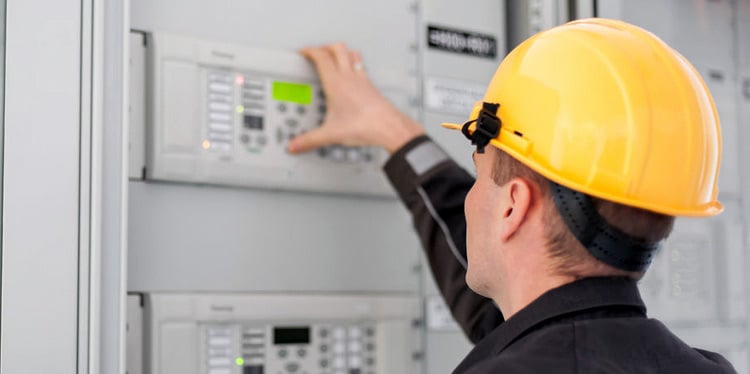
Numerical relays help in protecting different electrical equipment like generator, transformers, transmission lines, and motors. Therefore, many simple yet important things need to be checked with a Numerical Relay, like its running time (which can be manually set), current clock time, and current date.
Now, it's common that many people ask why it is important to set date and time. This can be well explained with the help of today's case study about a typical industrial system. In one incident, there was a breakdown of one section due to fault in 11 kV transformer feeder (Remote). This resulted in the cascaded tripping and it went on till the 66 kV Incomer from the grid tripped. The problem was of relay co-ordination but on analysis, it was observed that this was not completely the relay coordination issue. You can check out this case study explaining the importance of relay co-ordination in Process industries.
The team was called for troubleshooting. The first step that was taken was to take fault records of all five relays along with the existing settings. While checking, it was observed that both the relays were showing proper date and time but had no fault records matching the other three relays. Instead, they were showing the wrong dates (from 6 months to 6 years) before the incident.
On enquiring, the team came to know that in both the relays date and time settings were modified by a plant technician post the occurrence of the fault. After lengthy discussions with many personnel involved and sifting fault records minutely. Eventually, we could zero-in on which records to interpret and based on that how can the team consult; a seemingly 10 minutes exercise lengthened to about 8 hours. The retrieved data of the Fault Record was something like
Fault 1: 19th February 2016 (Over Current)
Fault 2: 12th September 2013 (Earth - Fault)
Fault 3: 16th July 2015 (Over Current)
One might argue that Fault 1 is the latest but in the time between the breakdown and when the team reached the site for data collection for Fault analysis which was 7 days later, there was one more tripping due to over current. So, after checking Fault in other 11 kV relays that were tripped that day, the team found that Fault 2 was actual for which the team had to analyze for the breakdown that occurred on 14th February 2016.
Generally, relay loses synchronism when relays auxiliary supply is lost for a very long time, which usually happens during the routine shut down for a particular unit for 3 – 4 days or more than that. There is no solution for this other than synchronizing relay clock with Indian Standard Time whenever the auxiliary supply is turned on.
Apart from this there any problems due to improper setting of date and time. Like, Erroneous records of all faults and events and this erroneous analysis may lead to the re-occurrence of the same events which again leads to wastage of productive time. The solution is to ensure that there is proper synchronization of the relay clock with DCS / GPS / SCADA. This is helpful especially in the case, the auxiliary supply is out of service for a longer duration of time. Also, checking relay parameters at regular intervals should be done to avoid such issues.
About the Author
 Avinash Singh is an Electrical Engineer with over 11 years of rich experience in Electrical Maintenance, Installation, Testing, and Commissioning of all major electrical equipment. He is specialized in bringing down Energy Cost of a Plant by reducing electricity bills and increasing energy efficiency. He also reduces plant breakdown costs by implementing proper maintenance activities during routine and shutdown. Through these Case Studies, he shares his experience and challenges faced in his work routine with the readers of Circuit Digest.
Avinash Singh is an Electrical Engineer with over 11 years of rich experience in Electrical Maintenance, Installation, Testing, and Commissioning of all major electrical equipment. He is specialized in bringing down Energy Cost of a Plant by reducing electricity bills and increasing energy efficiency. He also reduces plant breakdown costs by implementing proper maintenance activities during routine and shutdown. Through these Case Studies, he shares his experience and challenges faced in his work routine with the readers of Circuit Digest.





